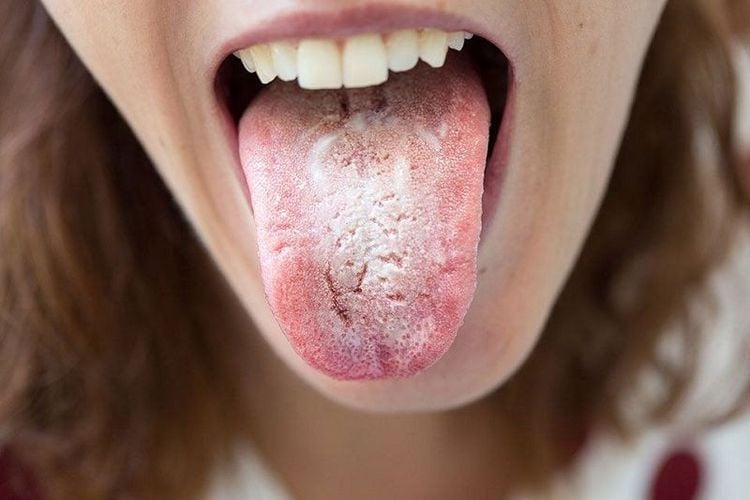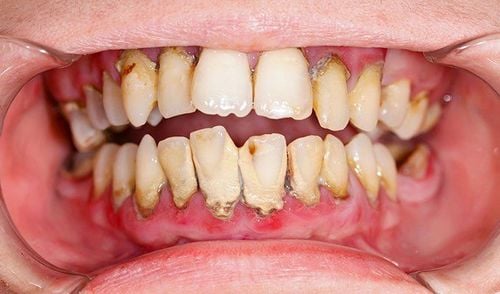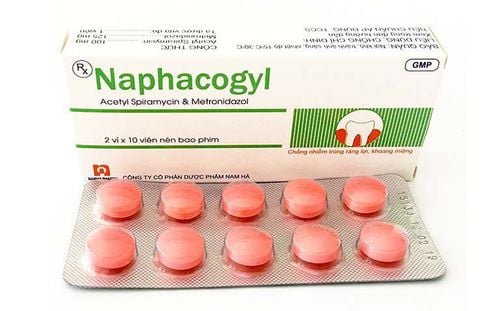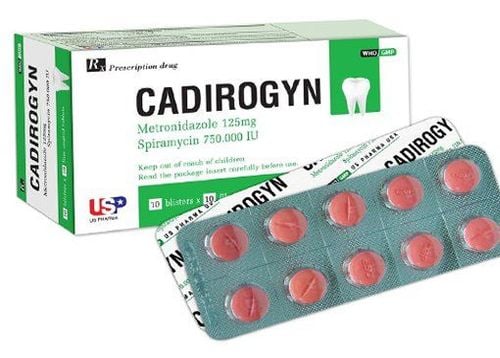This is an automatically translated article.
Halitosis is mainly caused by sulfur-producing bacteria that normally live on the surface of the tongue and in the throat. Sometimes, the cause of bad breath is when these bacteria begin to break down proteins at a very high rate and odorous volatile sulfur compounds are released from the back of the tongue and throat, causing the person to suffer. face many obstacles in daily life.
1. What is bad breath?
Human breath consists of very complex substances with many different odors that can create unpleasant situations such as halitosis.
Accordingly, halitosis is a word used to describe any unpleasant odor emanating from the mouth and breath. This undesirable condition is very common for both sexes and for all age groups. Whatever the cause of bad breath, it always creates social and psychological disadvantages for the individual; Even these situations affect the individual's relationships with others.
2. Overview of causes of bad breath
Halitosis is formed by volatile molecules caused by pathological or non-pathological reasons and originates from the oral or non-oral route. This condition is very common in the general population and up to 50% of people in the community suffer from halitosis. Although halitosis is caused by many factors, 90% of cases are caused by oral cavity such as poor oral hygiene, periodontal disease, tongue fungus, food clinging, unclean dentures, dental restorations bugs, oral cancer and throat infections.
There are several methods to identify halitosis; However, a person can have many different causes of bad breath. However, bad breath can only be completely treated if the cause is detected properly. Therefore, the most important issue for the treatment of halitosis is to detect the cause or determine the source by detailed clinical examination. Treatment must be based on the cause, which may include simple measures ranging from scaling, oral hygiene instruction, tongue cleaning and rinsing.

Nấm lưỡi có thể là nguyên nhân hơi thở hôi
3. The causes of bad breath originate in the oral cavity
Although halitosis has a multifactorial origin, the source of 90% of cases is the oral cavity. In the oral cavity, the temperature can reach 37°C. During exhalation, humidity can also reach 96%, especially when exhaling through the mouth. These conditions are a suitable environment for the growth of bacteria. The number of bacterial species found in the oral cavity is more than 500 species and most of them are capable of producing odorous compounds that can cause bad breath.
In these conditions, poor oral hygiene plays a major factor in the multiplication of bacteria that cause halitosis and promote halitosis. These bacteria include particularly Gram-negative species and proteolytic obligate anaerobes, and they are mainly retained in the coating on the surface of the tongue and periodontal pockets. Among healthy individuals, with no history of bad breath and no periodontal disease, some present with bad breath due to bacteria remaining on the surface of the tongue. These bacteria break down organic matter (such as glucose, mucin, peptides, and proteins found in saliva, tissue fluid, oral soft tissue, and retained debris) and produce odorous compounds.
Due to poor oral hygiene, food debris and dental bacterial plaque accumulate on teeth and tongue, causing tooth decay and periodontal diseases such as gingivitis , periodontitis. Inflammation of the gum and periodontal tissues creates sources of plaque-related periodontal disease that can increase the severity of halitosis. However, other forms of periodontal disease, especially the acute and aggressive forms such as acute necrotizing ulcerative gingivitis, peritonitis, Vincent's disease, or severe forms of periodontitis, can increase breath odor. uncomfortable. On the other hand, gum disease caused by inflammation or medication (such as phenytoin, cyclosporin, or calcium channel blockers) can also increase the risk of bad breath.
Besides periodontal condition, untreated deep lesions also create a reservoir for food debris and bacterial plaque that causes odors. Another important factor that causes bad breath is the flow of saliva. Saliva functions as a buffer or cleanser and keeps bacteria under control. Therefore, reduced saliva flow will have a negative effect on inadequate oral self-cleaning that causes halitosis. The cause of decreased salivary flow can be influenced by many reasons such as medications (eg, antidepressants, antipsychotics, diuretics and antihypertensives), salivary gland disease (eg: diabetes, Sjorgen's syndrome), chemotherapy or radiation.
Other factors in the oral cavity that also contribute to halitosis are endodontic, surgical and pathological factors such as exposed teeth, oral disease, oral cancer and ulcers, wounds on restorations dentures or dentures, orthodontic fixings, keeping teeth at night or infrequently cleaning dentures, ill-adapted prosthetic crowns, bridge dislodgement, and interstitial adhesion of food. All of these factors are food or plaque retention areas, which increase bacterial counts, tissue breakdown, amino acid breakdown, and decreased salivary flow, resulting in the release of volatile compounds and causing halitosis.

Nha chu là một trong các nguyên nhân hơi thở hôi
4. Causes of bad breath outside the oral cavity
Nearly 8% of cases of bad breath have external causes but are rarely encountered. Respiratory system problems, digestive diseases, liver disease, hematologic or endocrine system disorders, and metabolic conditions can all be causes of bad breath.
Respiratory system problems can be divided into upper and lower respiratory tract problems. These are sinusitis, throat malignancy, cleft palate, foreign body in nose or lungs, nasal malignancy, subrenal abscess, nasal infection, tonsillitis, tonsillitis, throat malignancy, lung infections, bronchitis, and malignancies of the lungs, bronchiectasis. Bacterial activity in these conditions causes halitosis, which leads to putrefaction of tissues or tissue necrosis and ulceration and production of foul-smelling, expired gas that causes halitosis.
Gastrointestinal diseases that cause halitosis include pyloric stenosis, duodenal obstruction, aorto-enteric fistula, pharyngeal pouch, diverticulum, diaphragmatic hernia causing food stagnation. Reflux esophagitis, dysphagia (achalasia), lipodystrophy, or other malabsorption syndromes that can cause excessive flatulence, or Helicobacter pylori infection, which causes stomach ulcers, will increase the concentration of bacteria in the oral cavity.
In addition, liver or hematologic diseases such as liver failure and leukemia, renal failure, endocrine system disorders such as diabetic or menstrual ketoacidosis, trimethylaminuria and hypernatremia can cause halitosis.
In addition, people can also get bad breath if they eat a lot of smelly foods like garlic, onions, spicy foods. Other products such as alcohol, tobacco, betel nut, abuse of mouthwash solvents that cause oral dysbacteriosis can also cause unpleasant odors.
In summary, the causes of bad breath can originate from both inside and outside the mouth. In most cases, bad breath is caused by bacteria present on the teeth and debris on the tongue. Therefore, when worried about “what is bad breath” or the cause of bad breath, regular visits to your dentist can help rule out periodontal disease and identify any reasons, resulting in a fuller smile. confident and radiant.
Please dial HOTLINE for more information or register for an appointment HERE. Download MyVinmec app to make appointments faster and to manage your bookings easily.
References: mouthhealthy.or, hopkinsmedicine.org, ncbi.nlm.nih.gov












